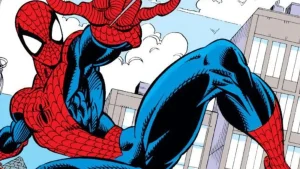Seinen anime represent the genre’s intellectual and emotional adulthood. The term seinen literally means “young man,” and it refers to works targeted at men roughly 18 to 40 years old. Unlike shonen anime, which typically focuses on youthful optimism, seinen trades those ideals for maturity and realism.
Seinen trusts the viewer’s maturity — that we can handle ambiguity, that we don’t need every mystery explained, and that tragedy can sometimes be truth without redemption. At their best, seinen anime prove the medium can do what great literature or cinema does — hold up a mirror to the human condition and refuse to flinch when we look too long.
March Comes in Like a Lion (3-gatsu no Lion) follows Rei Kiriyama, a young professional shogi player whose prodigious talent has made him isolated rather than celebrated. Over time, through his interactions with a kind family of three sisters, Rei starts to rediscover a sense of belonging and purpose. The story doesn’t promise easy redemption, just gradual progress. If neon-colored power fantasies show us how to conquer the world, this anime reminds us that sometimes surviving your own mind is just as heroic.
Set in the lawless city of Roanapur, Black Lagoon follows Rokuro “Rock” Okajima, a Japanese salaryman whose mundane corporate life is shattered when he’s kidnapped by a band of mercenaries known as the Lagoon Company. Rather than being rescued, Rock ends up switching sides. Alongside the volatile gunwoman Revy, the stoic leader Dutch, and the hacker Benny, he learns that “right” and “wrong” mean very little in a world built on smuggling and violence. If you’re looking for an anime that combines unapologetically brutal action with thought-provoking character drama, Black Lagoon is an unforgettable experience.
Parasyte: The Maxim follows hinichi Izumi, an ordinary high school student whose life spirals into chaos when a mysterious alien parasite fails to take over his brain and instead embeds itself in his right hand. The creature, later named Migi, is intelligent and purely driven by survival. Together, the two form an uneasy coexistence, learning from each other while fending off others of Migi’s kind who have succeeded in fully consuming their human hosts. Where a typical shōnen series would wrap its conflicts in friendship and courage, Parasyte strips away such comfort.
Love isn’t always tender. Sometimes it’s a battlefield. Kaguya-sama: Love is War turns this idea into romantic tension, proving that intellect and emotion are far more explosive when they collide in a war of love. Set in the elite Shuchiin Academy, the story follows Kaguya Shinomiya and Miyuki Shirogane, the school’s top student council members, both utterly incapable of confessing their feelings. Instead, they treat romance like a strategic duel.Whoever confesses first, loses. While many might mistake Kaguya-sama for a shounen anime because of its high school setting, it’s undeniably a seinen work. The manga’s serialization in Weekly Young Jump and its mature, satirical approach to romance cement its place in the genre.
Ghost in the Shell is a cyberpunk masterpiece that asks one of humanity’s most profound questions: What does it mean to be human in an age where technology blurs the line between man and machine? Set in a futuristic world where cybernetic enhancements, the story follows Major Motoko Kusanagi, a highly skilled cyborg operative leading Section 9, an elite counter-cyberterrorism unit. The series (and its various adaptations) explore her existential crisis as she hunts the hacker known as the Puppet Master, a being that defies control and blurs the barrier between artificial intelligence and self-awareness. To put it bluntly, Ghost in the Shell isn’t science fiction — it’s speculative philosophy with guns. For anyone who wants anime that thinks as much as it thrills, Ghost in the Shell remains one of the most intelligent and unsettling masterpieces ever made.
Set in 11th-century Europe during the height of Viking conquest, Vinland Saga follows Thorfinn, a young Icelandic boy whose life is consumed by hatred after witnessing his father’s death at the hands of the cunning mercenary Askeladd. Thorfinn swears vengeance and follows Askeladd’s band across years of warfare, all for the chance to one day face his father’s killer in an honorable duel.
But as blood continues to flow and empires rise and fall, Vinland Saga pivots: this is not a glorification of revenge but a deconstruction of it. The farther Thorfinn travels, the more he realizes that violence creates nothing, but in breaking the cycle itself. The show doesn’t just age with its protagonist; it forces its audience to. In that sense, Vinland Saga belongs in the same breath as Berserk or Monster for its exploration of what happens after the blood dries.
What if saving a life meant unleashing pure evil into the world? Monster dares to ask that question — and then spends 74 episodes answering it in the most human way possible. The story follows Dr. Kenzo Tenma, a Japanese neurosurgeon living in Germany, whose life begins to unravel after one decision. He chooses to save the life of a young boy over that of a politically powerful mayor.
Years later, Tenma discovers that the boy he saved, Johan Liebert, has grown into a serial killer. Tenma abandons his old life to hunt down Johan. Simply put, Monster isn’t about catching a killer; it’s about tracing the anatomy of evil and asking whether evil is something born, made, or chosen. It may be a slow burn, but by the end, it leaves a mark that few anime ever do — not on your senses, but on your conscience.
What do you think? Leave a comment below and join the conversation now in the ComicBook Forum!
The post 7 Best Seinen Anime, Ranked (And #4 Might Spark Controversy) appeared first on ComicBook.com.




